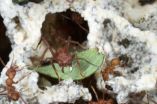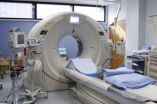(Press-News.org) CLEVELAND – June 29, 2011 –Researchers at Case Western Reserve University School of Medicine have discovered a long-sought cellular factor that works to inhibit HIV infection of myeloid cells, a subset of white blood cells that display antigens and hence are important for the body's immune response against viruses and other pathogens.
The factor, a protein called SAMHD1, is part of the nucleic acid sensing machinery within the body's own immune system. It keeps cells from activating immune responses to the cells own nucleic acids, thus preventing certain forms of autoimmunity from developing.
SAMHD1 factor, researchers have found, can also sense and interfere with infection of myeloid cells, such as macrophages and dendritic cells, with HIV-1 and related immunodeficiency viruses. As such, SAMHD1 prevents the synthesis of virus copies in these cells, according to research led by Jacek Skowronski, PhD, a professor in the Department of Molecular Biology and Microbiology and member of the Center for AIDS Research at the Case Western Reserve University School of Medicine.
The findings appear in a manuscript published in the June 30 issue of Nature featuring Dr. Skowronski as the paper's senior author. The research was carried out in his lab at Case Western Reserve in collaboration with a research group led by Michael P. Washburn, PhD, at the Stowers Institute for Medical Research in Kansas City.
This issue of Nature also carries an independent report by a team from France headed by Monsef Benkirane, PhD, that identifies SAMHD1 as a factor that limits HIV growth in myeloid cells. The research broadens the understanding of how the immune system of the infected people handles HIV, and how HIV evades the immune system's response.
"The identification of SAMHD1 and its function may help to explain why some infected individuals can control HIV infection better than others," Dr. Skowronski says. "Ultimately, it could also provide a basis for conceiving of new therapies and treatment approaches to block HIV infection and/or its replication in infected individuals, and to stimulate body's own immune response to HIV."
Prior to this research the normal function of SAMHD1 was thought to be the prevention of the inappropriate activation of a class of the anti-viral responses mediated by production of anti-viral factors termed interferons, in the absence of virus infection. Mutations in SAMHD1, as well as two other cellular genes that encode nucleases, TREX1 and RNAse H2, cause a condition called Acairdi-Goutieres syndrome (AGS). The condition mimics congenital viral infection, and is due to unwarranted induction of the immune system's interferons in the absence of the virus. SAMHD1 and other AGS-causing cell proteins work to dispose cellular nucleic acid debris, thereby preventing inappropriate activation of the interferon system.
In the work described in the Nature manuscript, the researchers led by Dr. Skowronski discovered that in addition to preventing inappropriate autoimmune responses such as those seen in AGS, SAMHD1 possesses the ability to inhibit infection of myeloid cells by HIV by effectively interfering with the production of viral nucleic acids. Through this action SAMHD1 may prevent efficient activation of immune responses to HIV-1 virus in infected individuals, Dr. Skowronski explains.
The research also shows HIV-2 and related simian immunodeficiency viruses (SIVsm/mac) are able to overcome the protective mechanism within myeloid cells by using the protein Vpx they encode, to dispose of SAMHD1, thereby allowing infection with these viruses. Interestingly, viruses possessing Vpx, such as HIV-2, are much less pathogenic than HIV-1. This could be because by being able to establish infection in myeloid cells they provoke much more robust immune responses that HIV-1 does, since HIV-1 can not infect these cells efficiently, Dr. Skowronski says.
As a result, "One might expect that manipulation of SAMHD1 function in the context of HIV-1 infection may lead to more robust immune response to this virus" according to Dr. Skowronski.
Moving forward, researchers will focus on better understanding the molecular pathway SAMHD1 uses to inhibit HIV-1 infection. They will likewise strive to learn more about how SAMHD1 shapes the development of AIDS in HIV-infected individuals, Dr. Skowronski says.
###
About Case Western Reserve University School of Medicine
Founded in 1843, Case Western Reserve University School of Medicine is the largest medical research institution in Ohio and is among the nation's top medical schools for research funding from the National Institutes of Health. The School of Medicine is recognized throughout the international medical community for outstanding achievements in teaching. The School's innovative and pioneering Western Reserve2 curriculum interweaves four themes--research and scholarship, clinical mastery, leadership, and civic professionalism--to prepare students for the practice of evidence-based medicine in the rapidly changing health care environment of the 21st century. Eleven Nobel Laureates have been affiliated with the school.
Annually, the School of Medicine trains more than 800 M.D. and M.D./Ph.D. students and ranks in the top 25 among U.S. research-oriented medical schools as designated by U.S. News & World Report "Guide to Graduate Education."
The School of Medicine's primary affiliate is University Hospitals Case Medical Center and is additionally affiliated with MetroHealth Medical Center, the Louis Stokes Cleveland Department of Veterans Affairs Medical Center, and the Cleveland Clinic, with which it established the Cleveland Clinic Lerner College of Medicine of Case Western Reserve University in 2002. http://casemed.case.edu.
END
"This quasar is a vital probe of the early Universe. It is a very rare object that will help us to understand how supermassive black holes grew a few hundred million years after the Big Bang," says Stephen Warren, the study's team leader.
Quasars are very bright, distant galaxies that are believed to be powered by supermassive black holes at their centres. Their brilliance makes them powerful beacons that may help to probe the era when the first stars and galaxies were forming. The newly discovered quasar is so far away that its light probes the last part of the reionisation ...
PROVIDENCE, R.I. [Brown University] — Research results from the National Lung Screening Trial, published online June 29 in the New England Journal of Medicine confirm that helical low-dose CT (LDCT) scans for lung cancer reduce deaths in heavy smokers by 20 percent compared to X-ray scans, but several other key findings from the data gathered in the study, including cost-effectiveness, will be released in the next six months, said a Brown University statistician who helped lead the massive government-funded study.
"The results of the study say that the time has come for ...
(Embargoed) CHAPEL HILL, N.C. – Using a combination of genetic engineering and laser technology, researchers at the University of North Carolina at Chapel Hill have manipulated brain wiring responsible for reward-seeking behaviors, such as drug addiction. The work, conducted in rodent models, is the first to directly demonstrate the role of these specific connections in controlling behavior.
The UNC study, published online on June 29, 2011, by the journal Nature, uses a cutting-edge technique called "optogenetics" to tweak the microcircuitry of the brain and then assess ...
A Princeton researcher and his international collaborators have used lasers to peek into the complex relationship between a single electron and its environment, a breakthrough that could aid the development of quantum computers.
The technique reveals how an isolated electron and its surroundings develop a relationship known as a Kondo state – a state of matter that is of great interest to physicists and engineers. The results not only yield insights into a long-standing quandary in theoretical physics, but also may help scientists understand how to store information at ...
www.At-HomeMedSpa.com has announced the addition of the La-Roche-Posay line, to their online store. La Roche-Posay is famous for using thermal spring water rich in selenium. La Roche-Posay is an internationally known line of skincare sold all over Europe, Asia, Latin America, and now it is available at At-HomeMedSpa in the United States! The unique thermal spring water comes from a small village in central France called La Roche-Posay, which is where the brand's name is derived from.
La Roche-Posay Thermal Spring Water is the result of rainwater flowing over vast expanses ...
June 30, 2011 – The development of agriculture was a significant event in human cultural evolution, but we are not the only organisms to have adopted an agricultural way of life. In a study published online today in Genome Research (www.genome.org), researchers have sequenced the genome of a fungus farming leaf-cutting ant, revealing new insights into the genetics and molecular biology behind this unusual lifestyle.
Found in Central and South America as well as the southern United States, leaf-cutting ants have evolved a symbiotic relationship with fungus. By breaking ...
Scientists have found a 20 percent reduction in deaths from lung cancer among current or former heavy smokers who were screened with low-dose helical computed tomography (CT) versus those screened by chest X-ray. The primary research results from the National Lung Screening Trial (NLST) were published online today in the New England Journal of Medicine.
This article provides a more extensive analysis of the data originally reported in November 2010 while providing additional data to the public and research community without barriers to access. Sponsored by the National ...
Joe Jedlowski is pleased to announce a significant donation made to the Alzheimer's Association. This donation will help in many aspects when it comes to research and treatment of this detrimental disease. Joe Jedlowski, who is a prominent executive throughout the senior living field, has firsthand knowledge of the effects that Alzheimers has on individuals and their families.
As Regional Vice President of Atria Senior Living Group, Joe was affiliated with many influential groups and organizations within the New Jersey community. In addition to monetary donations, he ...
An analysis of genomic changes in ovarian cancer has provided the most comprehensive and integrated view of cancer genes for any cancer type to date. Ovarian serous adenocarcinoma tumors from 500 patients were examined by The Cancer Genome Atlas (TCGA) Research Network and analyses are reported in the June 30, 2011, issue of Nature.
Serous adenocarcinoma is the most prevalent form of ovarian cancer, accounting for about 85 percent of all ovarian cancer deaths. TCGA researchers completed whole-exome sequencing, which examines the protein-coding regions of the genome, ...
Dimitri Snowden announces the launch of his new website, www.DimitriSnowden.com. The site will be a virtual hub, showcasing Dimitri's online activities and linking his business and personal pursuits in one easy to find location. The new website details Dimitri Snowden's passion for mixed martial arts (MMA), robotics, racing, the environment, and his strategic consulting firm, ion360. The consulting firm specializes in delivering compelling outcomes using clever strategy and smart technology platforms.
The newly-launched website states that Dimitri Snowden, within the ...





